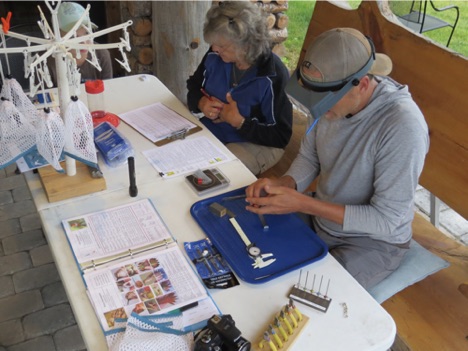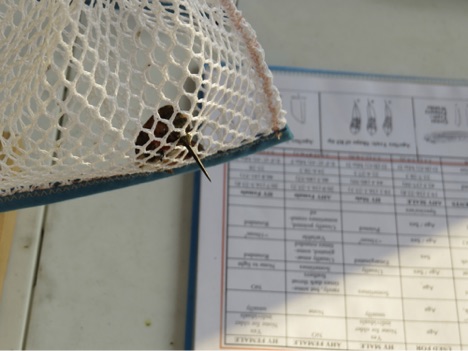
Hummingbird Banding
Block title
Avian Ecology
We seek to understand how birds use the habitats available and how that will change as we work to create more diverse plant communities. We also host researchers that document migrations of raptors and songbirds across MPG.
In this section of the research pages, you will find links to reports and updates from all the researchers involved with avian ecology, posted chronologically. The links will show you more in-depth reports on our findings. The three main projects covered here are:
Songbird Counts- A grid of sampling points covers MPG with 560 points. We visit each point 3 times a year, once in winter and twice during the songbird breeding season. We record, by ear or by sight, all the birds near that point for 10 minutes.
Songbird Banding- The University of Montana Bird Ecology Lab, UMBEL, runs several trapping stations at MPG as part of their regional songbird monitoring program. UMBEL sets up very fine nets that are nearly invisible to birds in brushy habitats. Songbirds fly into the nets and become entangled. The researchers take the birds from the nets and affix a numbered band to their leg before releasing them.
Raptor Research- The Raptor View Research Institute monitors raptor populations on MPG and counts raptors that migrate past MPG in the spring and fall. Raptor View researchers have placed transmitters on osprey and golden eagles that use the Bitterroot Valley.
This summer Eric Rasmussen opened a few days of hummingbird banding to the public. Eric is involved in many avian research projects at MPG, and over the past few years he developed hummingbird research here. This work required extensive training to learn the delicate handling of these little creatures. That eye for detail is made apparent by the jeweler’s glasses he wears to see the tiny feathers and fit bands measured in fractions of an inch.
The volunteers arrived in the early morning half-light to begin the day. Birders are a dedicated group and the uniqueness of this opportunity drew people in.
By the time we arrived at the work station, Eric and his crew were already busily trapping and banding. Apparently, the early bird isn’t restricted to just worms.
Montana is home to several species of hummingbirds, but our site sees just three: rufous, black- chinned, and calliope.
The first question most people ask is, ‘So how do you catch a hummingbird?’ The short answer is, “carefully” but the process goes something like this:
Researchers restrict the feeding station, which typically has five feeders in full swing, to two. This scarcity concentrates the birds on the feeders with nets. As the photo below shows, once the hummingbirds commit to feeding, the net drops. They are then delicately removed.
Researchers place the birds in soft mesh net bags. That way they are safely contained to await processing and banding.
Once in hand, Eric carefully takes various measurements to determine species, sex, age, and migratory health via stored fat.
Then comes banding. Eric fits each hummingbird with a tiny anklet that enables identification in the event of recapture. The bands are so small that if they didn’t stand out against the posts they’re stored on, they could go unnoticed.
After weighing each individual, visitors could carefully release them. It was a rare opportunity for volunteers to be so close to these amazing little birds.

























